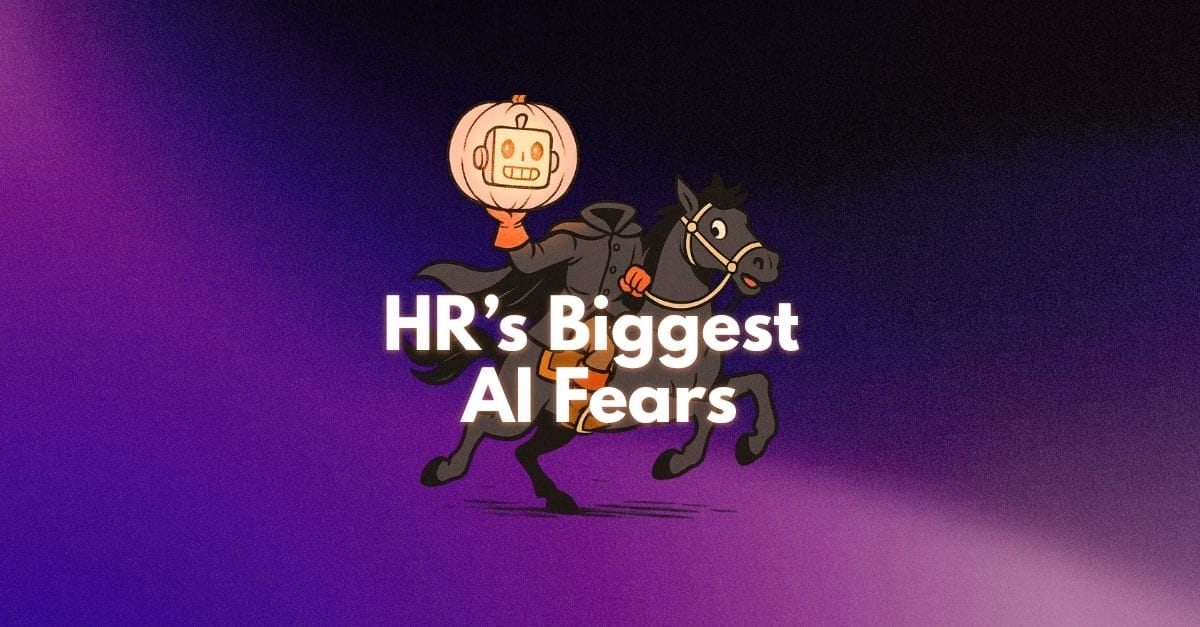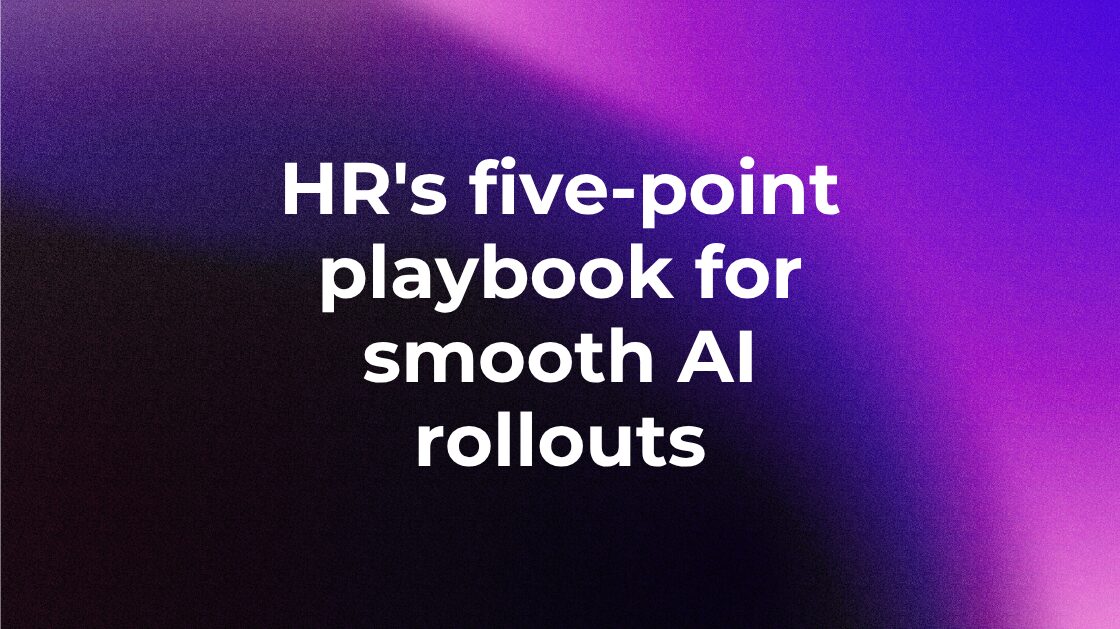Employee behaviors are the natural ways in which coworkers communicate and collaborate. While it’s helpful to understand behavior in any context, workplace behavior is especially crucial. If you work a traditional nine-to-five, and sleep another eight hours, that means you spend 50% of your active day working. The more you can glean about yourself and your peers on the job, the better.
Behavior is a complex topic, but it’s arguably never been more accessible. As technology develops, the data behind employee behaviors is only improving. It’s not just scientists taking advantage of this knowledge; as a leader, you too can demystify employee behaviors.
How, exactly? That’s what this blog is all about.
Here’s what we’ll cover:
- The importance of understanding workers’ behavior
- The types of employee behaviors
- How to use data to understand job behaviors
- Recognizing positive employee behaviors
- Improving employee motivation by understanding behavior data
Let’s get right to it.
The importance of understanding employee behavior
When people think of behavior, they often do so through the binary lens of “good” versus “bad.” If a coworker cuts you off in the kitchen to grab the last can of seltzer, you may think, Hey! That’s not what a good employee would do.
In reality, employee behavior is far more nuanced than a morality scale or integrity test. It’s a reflection of the unique ways you and your coworkers contribute to the team and organization.
Each person has natural behavioral drives, which influence everything from decision-making to communication. When working as a team, opinions will differ, and conflict may arise. But that doesn’t mean the team is misbehaving or failing to function. Rather, team members are following their innate drives—and working to satisfy their individual needs.
By understanding the why behind these different behaviors, you’ll gain greater visibility into how team members complement or conflict with one another. That way, you can take steps to cater to individual needs, build harmony as a group, and—ultimately—drive positive team outcomes.

What’s the real cost of losing a manager?
Try our free turnover calculator to uncover how much poor leadership is costing your business – before it’s too late.
Examples of workplace behavior
Workplace behaviors manifest in countless ways, from how someone approaches deadlines to how they share feedback with colleagues. Understanding someone’s specific style of behavior in the workplace—and their underlying motivations—is key to building stronger teams.
Positive behaviors often stem from employees feeling aligned with their natural drives. Proactive problem-solving might look like identifying process bottlenecks before they become critical.
Effective communication varies widely. One team member might excel at facilitating discussions, while another demonstrates strength through detailed written summaries. Collaboration takes many forms, from consensus-building to challenging assumptions that push for higher standards.
Negative behaviors are often signals that an employee’s drives are misaligned with their environment. Chronic lateness may indicate that someone who values flexibility is struggling within rigid constraints. Lack of accountability sometimes surfaces when employees feel overwhelmed by unclear expectations. Poor communication can manifest as either overwhelming colleagues with excessive details or failing to keep others informed.
The key to encouraging positive behaviors and correcting negative ones lies in understanding the person behind the behavior. This might involve providing autonomy to those who thrive with independence or creating structured collaboration for those who are energized by team interaction.
When addressing negative behaviors, focus on identifying mismatches between natural drives and role requirements.
Consider a marketing team where one member dominated brainstorming while another rarely contributed. Instead of labeling behaviors as “too aggressive” or “disengaged,” an effective manager recognizes different behavioral drives. By restructuring meetings to include both rapid-fire brainstorming and reflective planning time, the manager can create space for both styles to contribute meaningfully, resulting in more innovative campaigns.
The four types of employee behaviors in the workplace
At The Predictive Index, our scientists measure workplace behavior according to four key drives:
- Dominance: the drive to exert influence on people or events (a.k.a., the A drive)
- Extraversion: the drive for social interaction with other people (a.k.a., the B drive)
- Patience: the drive to have consistency and stability (a.k.a., the C drive)
- Formality: the drive to conform to rules and structure (a.k.a., the D drive)
Think of each of these four drives as its own spectrum, with a high end, a low end, and a midpoint.
Take the above behavioral pattern. An employee with this pattern has high dominance (high A), high extraversion (high B), low patience (low C), and low formality (low D). True to these drives, this person might be perceived as assertive and outgoing, with a need for variety and flexibility.
As mentioned, these spectrums don’t serve to measure integrity. High does not equate to “good,” just as low does not mean “bad.” By understanding where an employee falls for each of these drives, you can get a clearer picture of that person’s overall behavioral makeup—and what might motivate them at work.
Dominance
Dominance is the drive to exert influence on people or events. It’s also called the A drive.
An employee with a low amount of the dominance drive is collaborative, cooperative, and harmony-seeking. This person is accepting of company policies and generally happy to go along with others’ ideas. Low-dominance employees prefer to be recognized as part of a team, and they tend to shy away from individual competition.
An employee with a high amount of the dominance drive is independent, assertive, and self-confident. This person enjoys being challenged, is comfortable with conflict, and likes autonomy in problem-solving. High-dominance employees tend to prefer individual recognition, and they may sometimes come across as authoritarian.
Extraversion
Extraversion is the drive for social interaction with other people. It’s also called the B drive.
An employee with a low amount of the extraversion drive takes time to trust others, values his or her privacy, and needs opportunities to reflect. This person likes to work with facts and is analytical and imaginative. Employees with low extraversion tend to prefer private recognition, and they may sometimes come across as matter-of-fact.
An employee with a high amount of the extraversion drive connects easily with others, craves social acceptance, and needs opportunities to influence others. This person is outgoing, convincing, animated, and enthusiastic. High-extraversion employees prefer public recognition and appreciate visible signs of accomplishment.
Patience
Patience is the drive to have consistency and stability. It’s also called the C drive.
An employee with a low amount of the patience drive needs variety, freedom from repetition, and opportunities to handle multiple priorities. This person is comfortable with change, can juggle multiple priorities, and works at a faster-than-average pace. Low-patience employees can sometimes be seen as intense, restless, impatient, or brisk.
An employee with a high amount of the patience drive craves a stable work environment and the ability to work at a steady pace. This person needs freedom from constantly changing priorities and is generally patient, calm, and peaceful. High-patience employees tend to form long-term affiliations and like being recognized for their loyalty.
Formality
Formality is the drive to conform to rules and structure. It’s also called the D drive.
An employee with a low amount of the formality drive needs freedom from rigid structure as well as freedom from rules and controls. This person is tolerant of ambiguity, likes to be spontaneous, and prefers to delegate details to others. Low-formality employees are flexible, informal, and adaptable.
An employee with a high amount of the formality drive needs clarity of expectations and time to gain expertise. This person views themselves as a subject matter expert and thus requires freedom from the risk of error. High-formality employees are meticulous, thorough, and disciplined, and prefer to be recognized for their depth of knowledge.

How to use data to understand employee behaviors
Every person in your organization—from entry-level contributors to CEOs—has a mix of four key behavioral drives. By understanding how these behaviors manifest day-to-day, you can take steps to accommodate your team members’ needs and improve your team as a whole.
But what does this look like? To apply behavioral data to your team, you must first have a reliable way of collecting that data. Intuition has a time and place, but it’s impossible to get a clear picture of a person’s drives and needs based solely on instinct or “gut feel.”
Instead, you can turn to tools like the PI Behavioral Assessment™, which is scientifically validated for workplace use. PI packs 60-plus years of behavioral science into a two-question, six-minute assessment. By inviting team members to take the PI Behavioral Assessment, you can get powerful insights in the time it takes to make a pot of coffee.
Once you have that data in hand, you’re ready to act. You can apply behavioral data to a variety of team initiatives, including:
- Identifying behavioral strengths and gaps
- Recruiting for hard-to-fill job roles
- Improving communication skills
- Coaching employees for leadership roles
- Ensuring job fit and job satisfaction
The choice of how and when to apply behavioral data comes down to what’s most critical to the success of your team. If you’re looking to backfill an open role, you can use pre-employment testing to find candidates behaviorally suited for your intended job target. If you’re leading an interview, you can tailor the questions to probe for a behavioral fit. Or, if you’re onboarding a new hire, you can use data to coach them and help set them up for on-the-job success.
The options stretch far beyond these examples. Where there’s a need, there’s an application.
Understanding behavioral assessment results
To effectively leverage behavioral data in these ways, it’s essential to understand how behavioral assessments actually work and what the results mean. The PI Behavioral Assessment measures four primary behavioral factors that drive workplace behavior: Dominance (A), Extraversion (B), Patience (C), and Formality (D). Everyone has some combination of all four factors.
When a person takes the PI Behavioral Assessment, their results are translated into a behavioral pattern that centers around a midpoint and has three sigmas on either side. If a factor falls to the left of the midpoint, the person has a low amount of that factor. If a factor falls to the right of the midpoint, the person has a high amount of that factor.
In the pattern below, the individual has high dominance (A), high extraversion (B), low patience (C), and low formality (D).
The further a factor is from the midpoint, the stronger those workplace behaviors will be. Think of it as turning up the volume button on a stereo. A person with a dominance drive that’s one sigma high would be moderately assertive, whereas a person with a dominance drive that’s three sigmas high would be extremely assertive. While the first person may come across as independent, determined, and autonomous, the second person might seem aggressive, authoritarian, and challenging.
Factor combinations—or the way that certain drives interplay—are critical. The wider the spread between the two factors, the stronger the behavior will be. Looking at the above pattern, you can see that three sigmas separate A and D (this is a reasonably wide spread). The factor combination “A over D” indicates how comfortable someone is with taking risks. If a person’s A (dominance) factor is higher than their D (formality) factor, they are more comfortable with risk. On the other hand, if the candidate’s D is higher than their A, that person is cautious with risk.
Improving employee behavior for better results
Understanding factor combinations can help you pinpoint candidates who are likely to be a good fit for an open role. For example, if you need to hire a sales BDR, you’d look for candidates with A over D because salespeople must be comfortable with risk.
One of the four forces that disrupts employee engagement and productivity is poor job fit. Poor job fit happens when people are placed in roles they aren’t naturally wired to do. But if you take the time to understand what makes a candidate tick—and what type of workplace environment and role they’d be most successful in—you can reduce bad hires and turnover.
Another reason why good employees quit is poor manager fit. Poor manager fit occurs when managers lack the necessary tools to effectively manage employees, such as 360-degree feedback, thereby hindering their ability to reach their full potential. But when you give managers access to behavioral tools, they can use those data insights to tailor their management style to each direct report.








